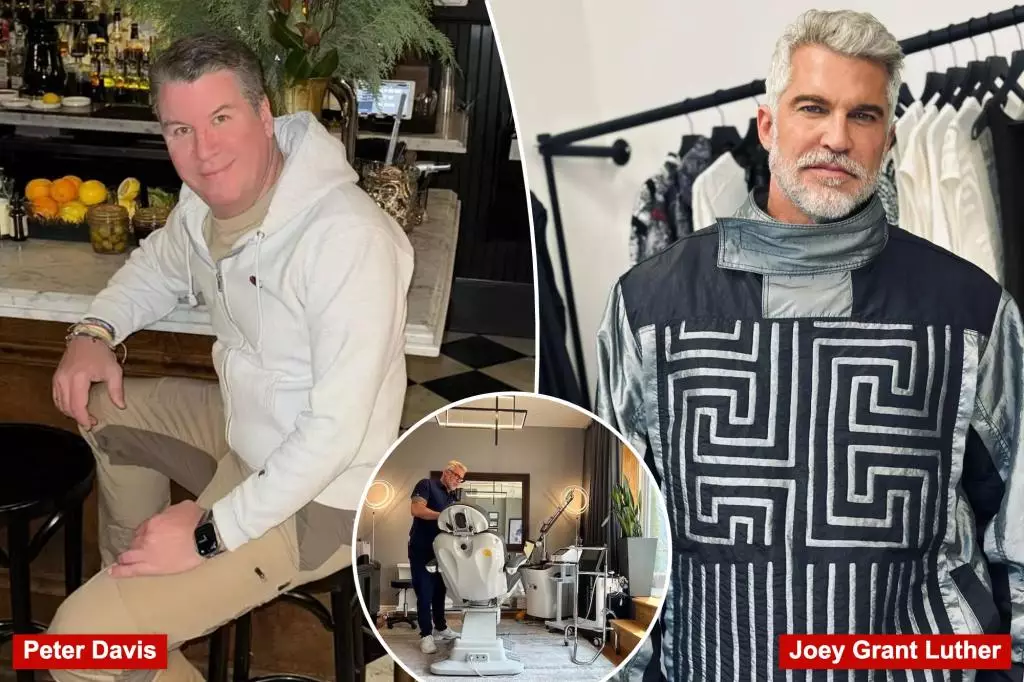In a riveting incident that has taken the beauty and medical community by storm, Dr. Joey Grant Luther, an unlicensed practitioner operating in New York, has been arrested for allegedly administering counterfeit Botox to unsuspecting clients, many of whom were members of the social elite. This scandal has exposed not only the dangers of seeking budget beauty solutions but has also revealed an urgent need for scrutiny in the aesthetics industry. Individuals once confident in their cosmetic choices are now banding together in various online forums, sharing experiences and guiding each other toward safe alternatives. The group, humorously dubbed “Former Lutherans,” encapsulates both the gravity of the situation and a burgeoning spirit of community amongst the victims.
The arrests and ensuing fallout were catalyzed by an alarming report from the US Attorney’s Office for the Southern District of New York, revealing that one of Luther’s patients was hospitalized due to botulism — a potentially life-threatening condition caused by improper or unsafe botulinum toxin usage. This stark reality unveils the harsh truth about the counterfeit beauty industry, where aesthetic offshore products find their way into local markets, misleading customers looking for affordable yet effective treatments.
Many individuals, like the notable magazine editor Peter Davis, shared reflections on the risks they took in pursuit of a smooth complexion. Davis admitted in a candid piece for Avenue magazine that he sought out Luther after a friend’s glowing review, only to now joke about the miracle of retaining his features intact. His experience serves as a warning, highlighting how attractive pricing can cloud judgment, leading people to overlook essential safety protocols. The illusion of “bargain Botox” has left many former clients questioning the legitimacy of their treatment and their own well-being, as some reported experiencing troubling side effects that spurred serious concern.
Luther’s tactics were both brazen and deceitful. By transforming his private apartment into a semblance of a medical spa, he lulled his clientele into a false sense of security. Reports indicate that the facility bore the trademarks of a legitimate practice, yet the absence of proper licensing raised a red flag that went unnoticed by many. Adding to the unusual scene was Luther’s insistence on payment through Venmo, which in retrospect rings alarm bells for many clients. Such red flags, however, were overshadowed by the allure of quick fixes and social status.
Furthermore, the scandal has shaken not only individual practitioners but the broader LGBTQ+ community as well, which was significantly represented in Luther’s clientele. The social repercussions of such a breach of trust are profound, as these individuals navigate their feelings of embarrassment and betrayal while trying to rebuild their confidence. Support networks, fueled largely by online interactions, are emerging to help those affected move forward.
This scandal is a pivotal moment for the aesthetics industry, compelling clients to adopt a more cautious approach toward cosmetic procedures. The social tensions within the community underscore a broader call for regulatory reform to ensure that aesthetic medical practices operate within legal frameworks. Those who have survived the ordeal must now advocate for greater transparency and diligence in their choices, emphasizing the importance of verifying practitioners’ credentials before undergoing any procedures.
Victims like Davis may find solace in the formation of support groups that share valuable information about legitimate practitioners. As the aftermath of this scandal continues to resonate, it reminds all that shortcuts in the pursuit of beauty can carry dangerous, sometimes irreversible consequences. The luxury of beauty should never come at the cost of health and safety, and as society reevaluates its standards for aesthetics, awareness becomes the first line of defense against further exploitation.
In a world where the allure of beauty is increasingly intertwined with risk, the lesson from Luther’s transgressions serves as a critical reminder to prioritize personal safety over the superficial. As the industry moves forward, the onus remains on both practitioners and clients to uphold standards of excellence, ensuring that beauty nearly always aligns with health.

